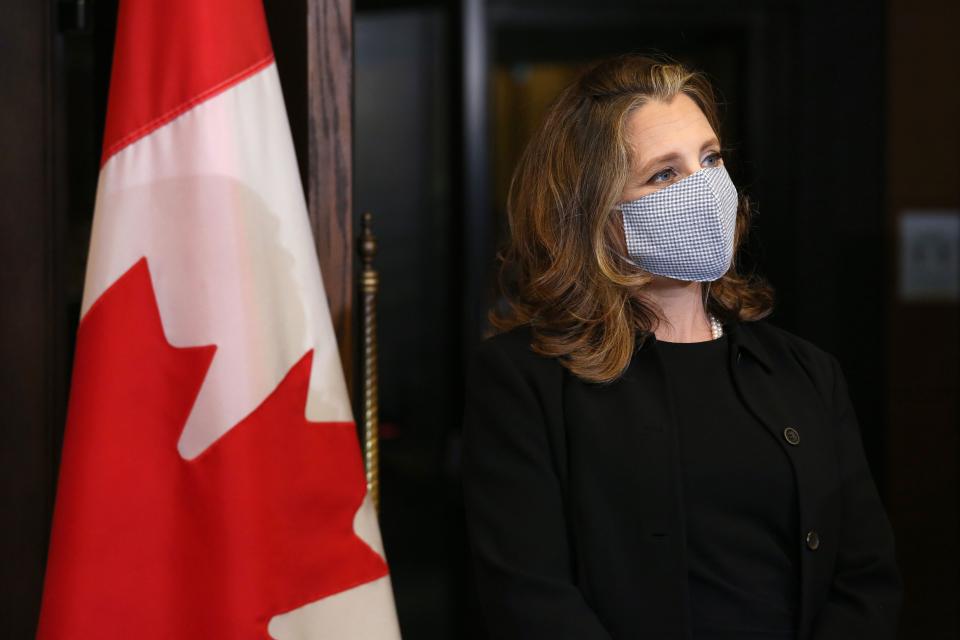Ottawa extends CERB and announces three new COVID-19 benefits

On her second day in her new job, Finance Minister Chrystia Freeland updated millions of Canadians who receive the Canada Emergency Response Benefit (CERB) with an extension to the program and three new benefits.
CERB, the $2,000 a month benefit, was launched as a response to the COVID-19 pandemic, but was set to wind down at the end of the month. Employment Minister Carla Qualtrough, who joined Freeland for the announcement, says the CERB will be extended for an additional 4 weeks, for a total of 28 weeks.
Ottawa has received 8.58 million unique applications for CERB to date and has paid out $68.46 billion.
“At the beginning of this crisis our government promised it would do whatever it takes to support Canadian workers and to support Canadian businesses. That is what we’re doing today and what we promise to continue to do,” said Freeland, during a news conference.
New Benefits
Qualtrough also announced three new benefits for people who wouldn’t qualify for EI.
The Canada Recovery Benefit for self-employed workers and other workers not eligible for EI will get $400 per week. But they will have to repay 50 cents on every dollar earned above $38,000.
The Canada Recovery Caregiving Benefit for eligible Canadians who are unable to work because they need to care for a child, family member, or dependent will be $500 per week. The benefit only applies in cases where care centres, schools, or day care have been shut down. For example, anyone keeping their kids home voluntarily will have to provide medical evidence for why they can’t attend.
Both are available for 26 weeks over a one year period.
The Canada Recovery Sickness Benefit is for those who are sick themselves or have to self-isolate because of COVID-19, and pays out $500 a week. It will be available for two one-week periods over the year.
Qualtrough says the new measures will cost around $37 billion. She also says recent labour market reports show Canadians would rather work than live off of benefits.
“When jobs are available Canadians will take them because they want to work and provide for their families,” she said, during the news conference.
Legislation related to the programs will be introduced in the first week of the return to parliament, which is prorogued until Sept. 23. The federal government is targeting October for applications to open for the new programs and 3 to 5 days for money to go out.
Transitioning to EI
Ottawa expects most of the people claiming CERB will automatically be switched over the EI once the program ends.
The transition to EI starts on September 27, and everyone who qualifies will get at least $400 a week. There will also be more flexibility around having enough hours worked to qualify. Applicants will have to show they worked 120 hours over the past 52 weeks.
EI premium rates for employers will be frozen for 2 years.
Jessy Bains is a senior reporter at Yahoo Finance Canada. Follow him on Twitter @jessysbains.
Download the Yahoo Finance app, available for Apple and Android.

 Yahoo Finance
Yahoo Finance 